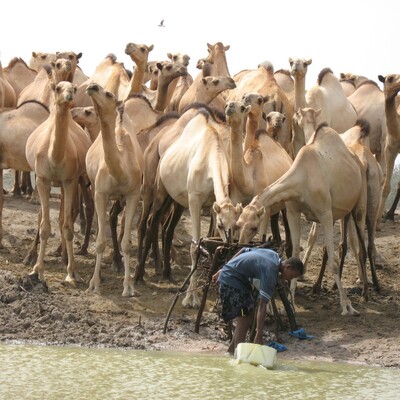
Traditional Horro cattle production in Boji District, West Wellega (Ethiopia)
Abstract
Inputs and outputs of traditional Horro cattle farming were monitored during the year 2001 in Boji District, West Wellega, located in the highlands of western Ethiopia. Inputs such as feeding and veterinary care were low. Milk and butter production, calf growth and animal work were also monitored. The mean lactation length was 314 (+ or -) 91 days. The total lactation milk yield was found to be 587 litres, 37% of which was suckled by the calf. The average yearly household butter production was 31.5 (+ or -) 8.9 kg. The retail butter price was 14.10 Birr/kg. The mean body weight one week after birth was 15.2 (+ or -) 3.0 kg and the daily weight gain from birth to 6 months was 110 (+ or -) 41 g. Oxen were worked seasonally for about 101.7 days per year, ploughing being the major (89%) activity. Low production performance is - explained by prevailing feed shortage during dry season, inappropriate calf management, widespread animal diseases, and low genetic potential. The urgency to increase livestock productivity in this overpopulated highland area by way of designing and implementing appropriate policies was recommended. In addition, the need to conduct on-farm productivity research was indicated as part of the means to find long term solutions to the existing constraints.
Citation
Ethiopian Journal of Animal Production;2(1): 97-114










